Written by: Deric Stowell
As I’m writing this article I’m munching on a delicious piece of Turkey Red wheat bread that I made with grain that I grew in my home garden.
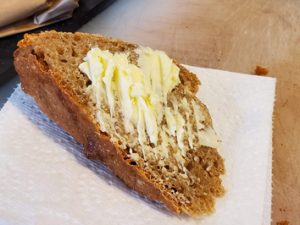
In January 2020 I was very fortunate to have been awarded a partial scholarship from SHED (Supporters of Horticulture Education) to attend the 5th annual (and very last) Grain School at UCCS.
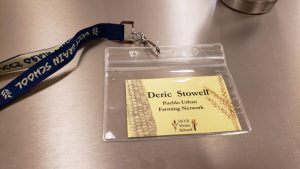
The Grain School brought in experts in science and practical application of heritage and ancient grains to the campus. At Grain School, we learned from artisans, scientists, and indigenous people about farming, baking, cooking, fermenting, malting and milling. They really fired up our imaginations to reintroduce whole and heritage grains at home and the community.

One of the workshops I attended was titled ”Growing Grains in Your Home Garden.” It focused on Turkey Red wheat and corn.
Turkey Red is the legendary grain long raised by German ancestors in Eastern Europe, where bread wheat has grown since time immemorial from the Great Hungarian Plain to the steppes of Russia and Ukraine.
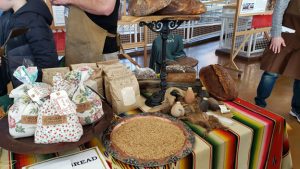
Today Turkey Red wheat is used for bread, as well as for making some beers. I even tasted a sample of Red Wheat whiskey!!
In this workshop, I learned some of the finer details about how and when to plant at our elevation (Pueblo is at 4625 feet) to maximize the yield. I also learned methods to harvest, including threshing and winnowing my harvest.
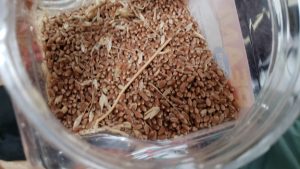
I started with approximately 1oz of Turkey Red wheat seed that I planted the 1st week of April, planting seeds 4-5 inches deep in rows 6 inches apart.
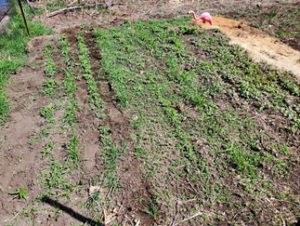
The space that I allocated for this project was approximately 20 feet long by 4 feet wide.
I grew my wheat alongside some quinoa, which I will write about in a separate article!
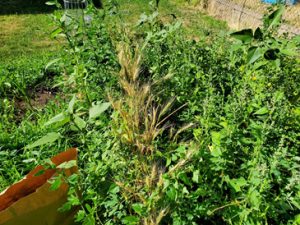
Around the middle of June, I was ready to harvest (or reap) the wheat.
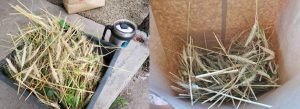
I used a pair of garden scissors and cut the seed heads off and put them into a paper bag to “finish off” the drying.
Next, I had to thresh or separate my grain from its chaff.
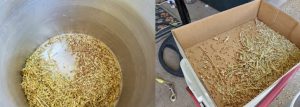
I didn’t find a very satisfactory way of doing this step mechanically, so I simply used my hands. I put on a pair of gloves and took some seed heads and rubbed them together and it worked “ok” but not as well as I would have liked. The problem with this is you end up with grain still not properly threshed, so when you go to the next step, winnowing, it does not do a very good job and you lose a lot of grain. I had to keep going back and re-doing the threshing step.
Next the winnow part, I set up a small fan with a small box below it to catch the grain kernels while the fan provided a way to blow the chaff away.
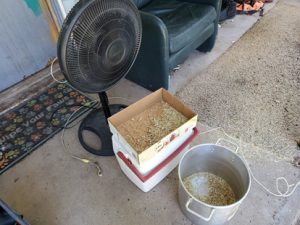
I finally had a small 14-ounce jar of grain, however it was still pretty “dirty”.
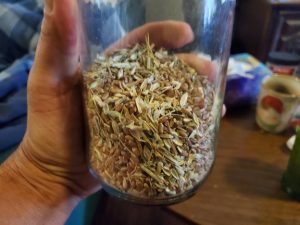
I had to do a lot of “extra steps” to finally get a clean jar of grain.
A word of advice, make sure to get the small rocks out of your grain before milling, or you will be buying your miller a new mill!
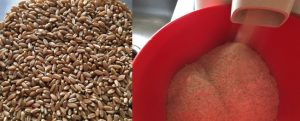
Once we had it fully cleaned and milled, I ended up with about 12 ounces of grain.
Now, time to bake!!
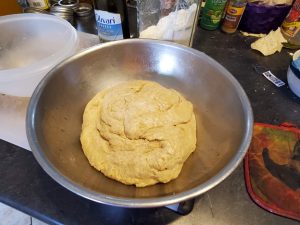
I had a batch of sourdough starter that I had started with another separate quantity of Red Wheat so I used that to make my loaf of bread. FULL DISCLOSURE: It failed to rise at first (after 5 hours) so I got impatient and re-mixed it in my mixing bowl and added a smattering of yeast to the mix.
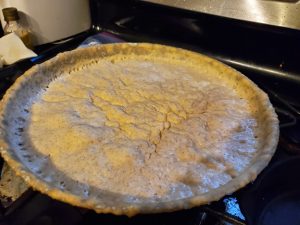
It rose so fast in the mixing bowl that I was afraid I was going to have an episode of Lucy Ricardo “Baking Bread with Too Much Yeast” on my hands!! (A link to the video is here: https://youtu.be/RA3hc4P3qe8)
I did bake in a bowl so I could get a round loaf shape, with more or less good results.
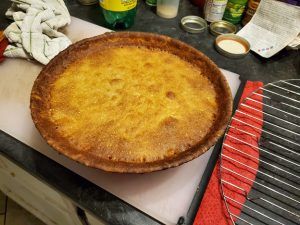
In conclusion …….I enjoy making things in a time-honored traditional way. To me it is important to know where your food items come from as well as how to make them.


